The Color-Octet Contributions to $P$-wave $B_c$ Meson Hadroproduction
- 格式:pdf
- 大小:219.81 KB
- 文档页数:14
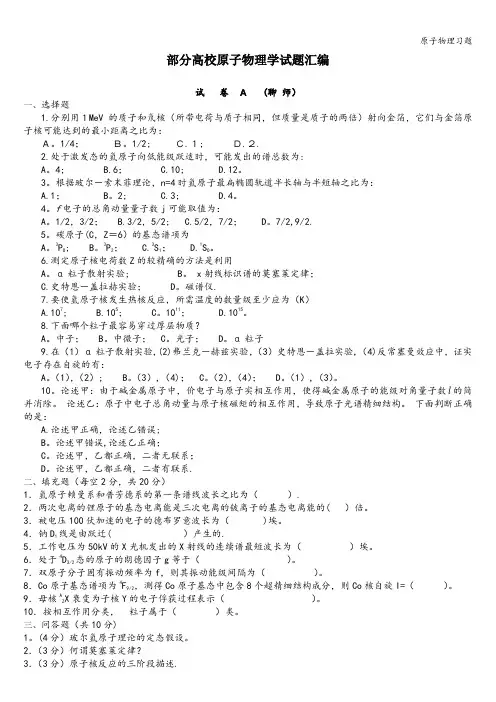
部分高校原子物理学试题汇编试卷A (聊师)一、选择题1.分别用1MeV的质子和氘核(所带电荷与质子相同,但质量是质子的两倍)射向金箔,它们与金箔原子核可能达到的最小距离之比为:A。
1/4;B。
1/2; C.1; D.2.2.处于激发态的氢原子向低能级跃适时,可能发出的谱总数为:A。
4; B.6; C.10; D.12。
3。
根据玻尔-索末菲理论,n=4时氢原子最扁椭圆轨道半长轴与半短轴之比为:A.1; B。
2; C.3; D.4。
4。
f电子的总角动量量子数j可能取值为:A。
1/2,3/2; B.3/2,5/2; C.5/2,7/2; D。
7/2,9/2.5。
碳原子(C,Z=6)的基态谱项为A。
3P O; B。
3P2; C.3S1; D.1S O。
6.测定原子核电荷数Z的较精确的方法是利用A。
α粒子散射实验; B。
x射线标识谱的莫塞莱定律;C.史特恩-盖拉赫实验; D。
磁谱仪.7.要使氢原子核发生热核反应,所需温度的数量级至少应为(K)A.107;B.105; C。
1011; D.1015。
8.下面哪个粒子最容易穿过厚层物质?A。
中子; B。
中微子; C。
光子; D。
α粒子9.在(1)α粒子散射实验,(2)弗兰克-赫兹实验,(3)史特恩-盖拉实验,(4)反常塞曼效应中,证实电子存在自旋的有:A。
(1),(2); B。
(3),(4); C。
(2),(4); D。
(1),(3)。
10。
论述甲:由于碱金属原子中,价电子与原子实相互作用,使得碱金属原子的能级对角量子数l的简并消除。
论述乙:原子中电子总角动量与原子核磁矩的相互作用,导致原子光谱精细结构。
下面判断正确的是:A.论述甲正确,论述乙错误;B。
论述甲错误,论述乙正确;C。
论述甲,乙都正确,二者无联系;D。
论述甲,乙都正确,二者有联系.二、填充题(每空2分,共20分)1.氢原子赖曼系和普芳德系的第一条谱线波长之比为().2.两次电离的锂原子的基态电离能是三次电离的铍离子的基态电离能的( )倍。
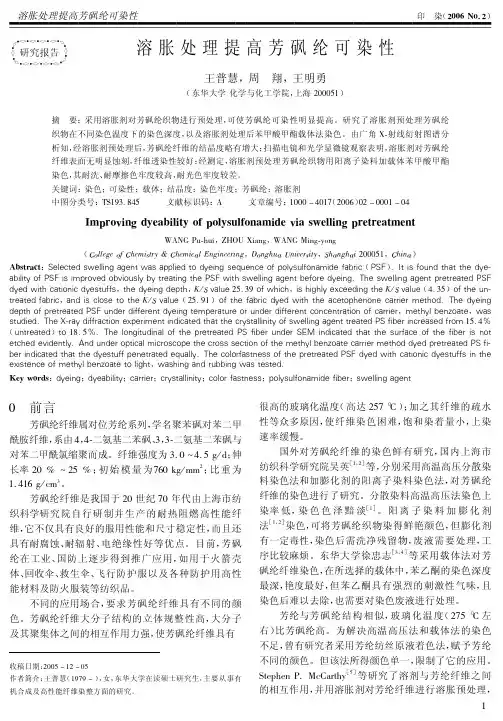
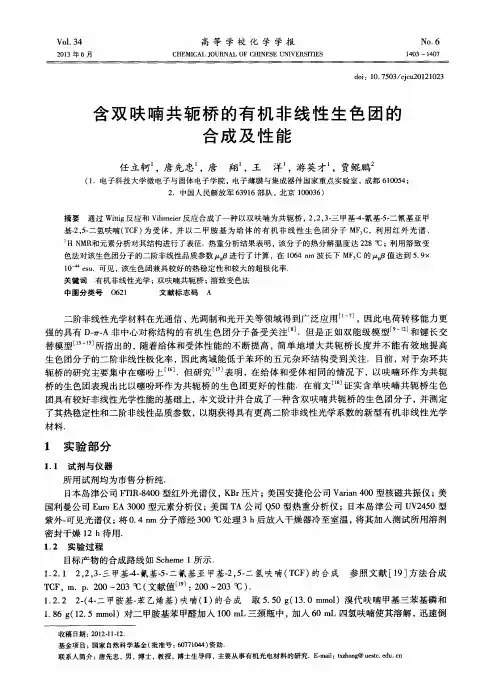
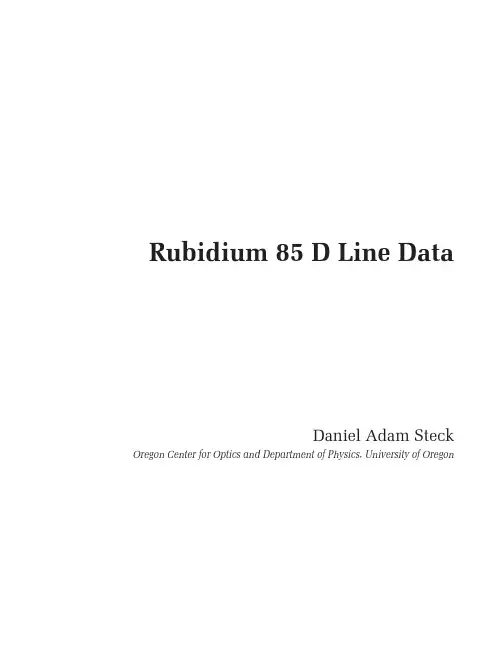
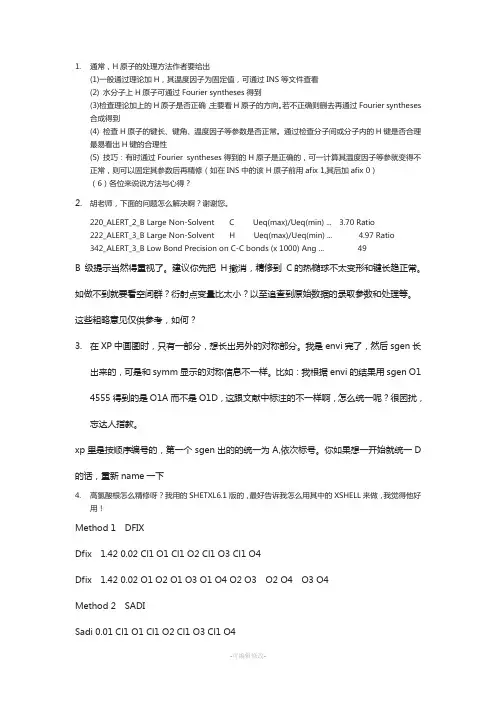
1.通常,H原子的处理方法作者要给出(1)一般通过理论加H,其温度因子为固定值,可通过INS等文件查看(2) 水分子上H原子可通过Fourier syntheses得到(3)检查理论加上的H原子是否正确,主要看H原子的方向。
若不正确则删去再通过Fourier syntheses合成得到(4) 检查H原子的键长、键角、温度因子等参数是否正常。
通过检查分子间或分子内的H键是否合理最易看出H键的合理性(5) 技巧:有时通过Fourier syntheses得到的H原子是正确的,可一计算其温度因子等参就变得不正常,则可以固定其参数后再精修(如在INS中的该H原子前用afix 1,其后加afix 0)(6)各位来说说方法与心得?2.胡老师,下面的问题怎么解决啊?谢谢您。
220_ALERT_2_B Large Non-Solvent C Ueq(max)/Ueq(min) ... 3.70 Ratio222_ALERT_3_B Large Non-Solvent H Ueq(max)/Ueq(min) ... 4.97 Ratio342_ALERT_3_B Low Bond Precision on C-C bonds (x 1000) Ang (49)B 级提示当然得重视了。
建议你先把H撤消,精修到C的热椭球不太变形和键长趋正常。
如做不到就要看空间群?衍射点变量比太小?以至追查到原始数据的录取参数和处理等。
这些粗略意见仅供参考,如何?3.在XP中画图时,只有一部分,想长出另外的对称部分。
我是envi完了,然后sgen长出来的,可是和symm显示的对称信息不一样。
比如:我根据envi的结果用sgen O1 4555得到的是O1A而不是O1D,这跟文献中标注的不一样啊,怎么统一呢?很困扰,忘达人指教。
xp里是按顺序编号的,第一个sgen出的的统一为A,依次标号。
你如果想一开始就统一D 的话,重新name一下4.高氯酸根怎么精修呀?我用的SHETXL6.1版的,最好告诉我怎么用其中的XSHELL来做,我觉得他好用!Method 1DFIXDfix 1.42 0.02 Cl1 O1 Cl1 O2 Cl1 O3 Cl1 O4Dfix 1.42 0.02 O1 O2 O1 O3 O1 O4 O2 O3 O2 O4 O3 O4Method 2SADISadi 0.01 Cl1 O1 Cl1 O2 Cl1 O3 Cl1 O4Sadi 0.01 O1 O2 O1 O3 O1 O4 O2 O3 O2 O4 O3 O45. 晶体的无序是怎么造成的呀,是晶体培养的问题吗?如果无序太多,在解单晶的时候怎么办?我指的是很多的点,没有结构,他们的峰值都大于了0.5大于0.5没什么的,解完后都在1以下就可以了。
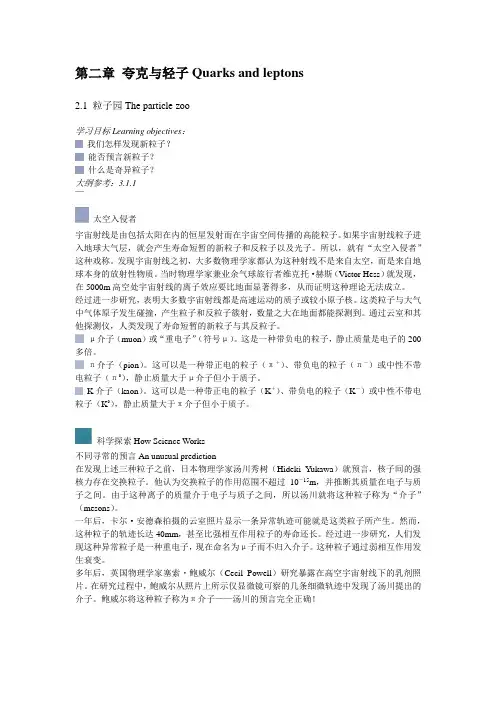
第二章夸克与轻子Quarks and leptons2.1 粒子园The particle zoo学习目标Learning objectives:我们怎样发现新粒子?能否预言新粒子?什么是奇异粒子?大纲参考:3.1.1 ̄太空入侵者宇宙射线是由包括太阳在内的恒星发射而在宇宙空间传播的高能粒子。
如果宇宙射线粒子进入地球大气层,就会产生寿命短暂的新粒子和反粒子以及光子。
所以,就有“太空入侵者”这种戏称。
发现宇宙射线之初,大多数物理学家都认为这种射线不是来自太空,而是来自地球本身的放射性物质。
当时物理学家兼业余气球旅行者维克托·赫斯(Victor Hess)就发现,在5000m高空处宇宙射线的离子效应要比地面显著得多,从而证明这种理论无法成立。
经过进一步研究,表明大多数宇宙射线都是高速运动的质子或较小原子核。
这类粒子与大气中气体原子发生碰撞,产生粒子和反粒子簇射,数量之大在地面都能探测到。
通过云室和其他探测仪,人类发现了寿命短暂的新粒子与其反粒子。
μ介子(muon)或“重电子”(符号μ)。
这是一种带负电的粒子,静止质量是电子的200多倍。
π介子(pion)。
这可以是一种带正电的粒子(π+)、带负电的粒子(π-)或中性不带电粒子(π0),静止质量大于μ介子但小于质子。
K介子(kaon)。
这可以是一种带正电的粒子(K+)、带负电的粒子(K-)或中性不带电粒子(K0),静止质量大于π介子但小于质子。
科学探索How Science Works不同寻常的预言An unusual prediction在发现上述三种粒子之前,日本物理学家汤川秀树(Hideki Yukawa)就预言,核子间的强核力存在交换粒子。
他认为交换粒子的作用范围不超过10-15m,并推断其质量在电子与质子之间。
由于这种离子的质量介于电子与质子之间,所以汤川就将这种粒子称为“介子”(mesons)。
一年后,卡尔·安德森拍摄的云室照片显示一条异常轨迹可能就是这类粒子所产生。
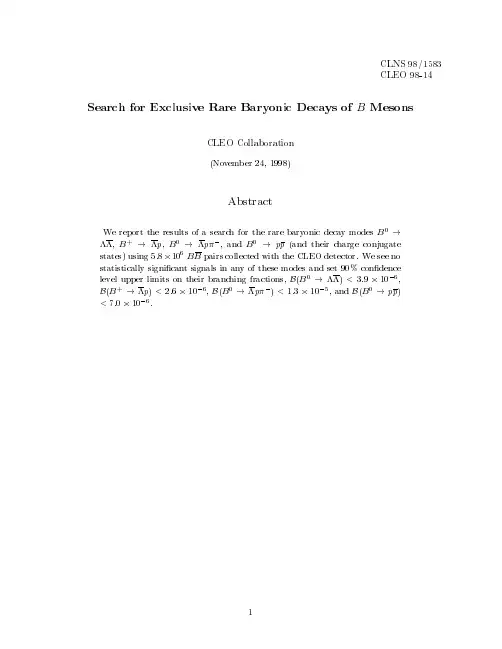
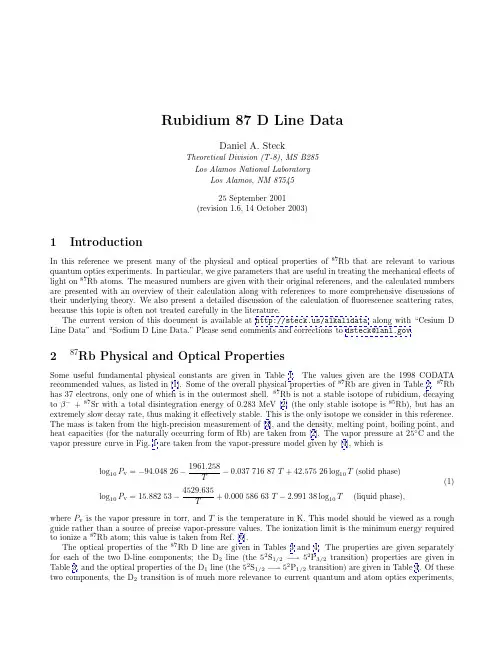
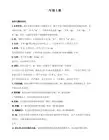
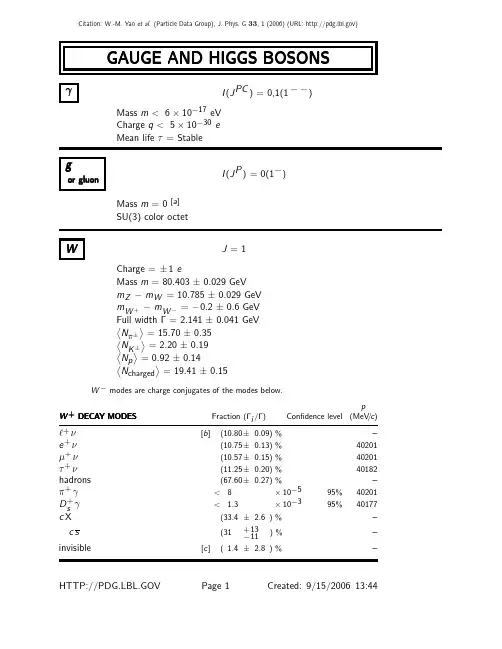
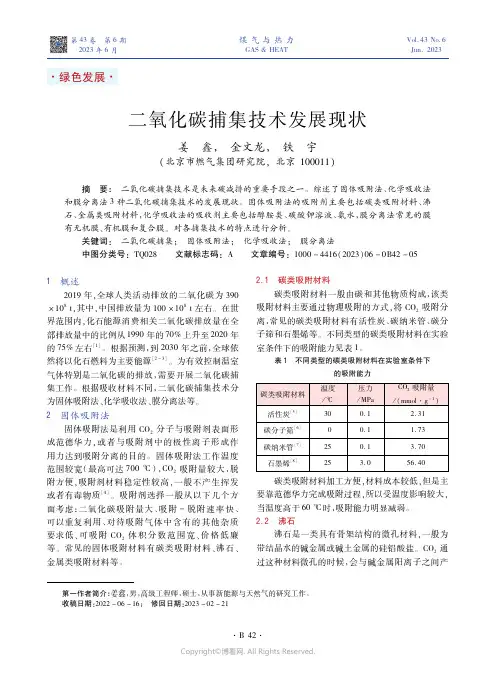
红外云顶亮温在西北太平洋热带气旋强度预报中的应用Ξ陈佩燕1,2 端义宏1,2 余 晖1,2 胡春梅31中国气象局上海台风研究所,上海,2000302中国气象局台风预报技术重点开放实验室,上海,2000303重庆市气象台,重庆,401147摘 要 应用GMS25气象卫星红外云顶亮温(TBB)资料,分析西北太平洋的热带气旋(TC)TBB、TBB的对称和非对称分量与滞后0—48h TC强度的相关关系。
发现,TC眼墙附近东南侧的TBB、距TC中心半径0.8°—1.7°范围内TBB对称分量和1—10波振幅之和与0—48h的TC强度有很好的负相关关系,与滞后24h的TC强度相关极值分别达到-0.52,-0.59和-0.625。
考虑气候持续因子、天气因子及TBB因子,针对1996—2002年西北太平洋远海区域(0°—50°N,120°—155°E)热带风暴(TS)等级以上样本,建立12,24h和48h强度预报方程并进行独立样本检验。
结果表明,1.0°—1.5°环域平均的TBB对12h强度预报的方差贡献位居第4,TC东南侧TBB的平均值和1.1°—1.5°范围TBB极大与极小值之差对24h强度预报的方差贡献分列第3和第5位。
考虑TBB因子的回归方程对TS和强热带风暴(STS)的强度预报能力有较大提高,对12h内强度减弱15m/s以上TC的12h预报、强度稳定TC的24h预报和强度48h增强10m/s以上TC的48h预报均有所改善。
关键词:红外云顶亮温,非对称结构,热带气旋,强度预报。
1 引 言现阶段,对于热带气旋(TC)强度预报缺少有效的客观方法。
应用最早和最为广泛的是根据可见光和红外云图上TC云型和云系特征来估计及预报TC强度的Dvorak技术,在改进的客观Dvorak技术中[1],用TBB(T BB)资料确定TC中心的位置、眼和周边的温度,并估计TC参数指数。
arXiv:hep-ph/0502155v2 13 Mar 2005TheColor-OctetContributionstoP-waveBcMesonHadroproduction
Chao-HsiChang1,2∗,Cong-FengQiao1,4†,Jian-XiongWang3‡,Xing-GangWu3§1CCAST(WorldLaboratory),P.O.Box8730,Beijing100080,China.
2InstituteofTheoreticalPhysics,ChineseAcademyofSciences,
P.O.Box2735,Beijing100080,China.3InstituteofHighEnergyPhysics,P.O.Box918(4),Beijing100049,China
4DepartmentofPhysics,GraduateSchoolofthe
ChineseAcademyofSciences,Beijing100049,ChinaAbstractThecontributionsfromthecolor-octetcomponents|(c¯b)8(1S0)gand|(c¯b)8(3S1)gtothehBc
orχJBc(theP-waveBcmeson)hadroproductionareestimatedintermsofthecompleteO(α4s)
calculation.Asnecessaryinputsintheestimate,wetakethevaluesoftheoctetmatrixelementsaccordingtotheNRQCDscalingrules,andasaresult,wehavefoundthatthecontributionstotheP-waveproductionmaybethesameinorderofmagnitudeasthosefromthecolor-singletones,|(c¯b)1(1P1)and|(c¯b)1(3PJ)(J=1,2,3).Especially,ourresultindicatesthattheobservationofthecolor-octetcontributionstotheP-waveproductioninthelowtransversemomentumregionisnotveryfarfromthepresentexperimentalcapabilityatTevatronandLHC.
PACSnumbers:12.38.Bx,13.85.Ni,14.40.Nd,14.40.Lb.Keywords:inclusivehadroproduction,color-octetcomponents,P-wavestates.I.INTRODUCTIONBcmesonhasbeenobservedexperimentally[1,2],andwithintheoreticaluncertaintiesandexperimentalerrorstheobservationsareconsistentwiththetheoreticalpredictions.InviewoftheprospectsinBcphysicsattheFermilabTevatronIIandLHC,Bcphysicsisattractingmoreandmoreattentions.ThehadronicproductionoftheBcmeson(itsgroundstatemainly),hasbeenstudiedquitewell[3,4,5,6,7,8,9,10].Especially,ageneratorBCVEGPY[9,10]forhadronicproductionofBcmesonhasbeenavailable,whichcanbeeasilycomplimentedtothePYTHIAenvironment[11]andenhancestheefficiencytogeneratethefullBceventsgreatlyincomparisonwithusingPYTHIAitself.IntheframeworkofeffectivetheoryofNRQCD[12,13],aheavyquarkoniumisconsid-eredasanexpansionofvariousFockstates.Therelativeimportanceamongthoseinfiniteingredientsisevaluatedbythevelocityscalingrule.Asimilarideacanbeappliedtothedoubleheavymesonsystemtoo.Thatis,thephysicalstateofBc,B∗c,hBcandχJBcmesonscanbedecomposedintoaseriesofFockstates:
|Bc=O(v0)|(c¯b)1(1S0)+O(v1)|(c¯b)8(1P1)g+O(v1)|(c¯b)8(3S1)g+···|B∗c=O(v0)|(c¯b)1(3S1)+O(v1)|(c¯b)8(3PJ)g+O(v1)|(c¯b)8(3S1)g+···(1)
and|hBc=O(v0)|(c¯b)1(1P1)+O(v1)|(c¯b)8(1S0)g+O(v1)|(c¯b)8(3PJ)g+···|χJBc=O(v0)|(c¯b)1(3PJ)+O(v1)|(c¯b)8(3S1)g+O(v1)|(c¯b)8(1P1)g+···,(2)
herevistherelativevelocity.NotethatthroughoutthispaperweusethesymbolshBc
andχJBctodenotethefourphysicalP-wavestates(hBcdenotestheP-wavestatewith
thedominantcolor-singletstate(c¯b)1(1P1),whileχJBcdenotestheP-wavestateswiththedominantcolor-singletstates(c¯b)1(3PJ)asdescribedinEq.(2))insteadofB∗cJ,L=1thatisusedinRef.[14].Herethethickenedsubscriptsofthe(c¯b)denoteforcolorindices,1forcolorsingletand8forcolor-octet;therelevantangularmomentumquantumnumbersareshownintheparenthesesaccordingly.Accordingtothevelocityscalingrule,theprobabilityofeachFockstateintheexpansionisproportionaltothescalesinadefinitepowerofv,squaredtheindicatedoneastheabove.Generally,theleadingFockstatesoftheBcandB∗cstatesare|(c¯b)1(1S0)and|(c¯b)1(3S1)respectively,whoseprobabilityinrespectoftherelativevelocityaresettobetheorderofO(v0).AlsofortheproductionoftheBcandB∗c
states,thereisnoproblematall,onecanbesurethatthecontributionsfromleadingFock
state(s)aredominant.AsimpliedinequationsEq.(2),atleadingandnextleadingorder,theproductionofP-waveBcmesonsmayinvolveintheFockstates:|(c¯b)1(1P1),|(c¯b)8(1S0)g,|(c¯b)8(3PJ)g···;|(c¯b)1(3PJ),|(c¯b)8(3S1)g,|(c¯b)8(1P1)g···.Forcolor-singletcomponents(P-wave),thelongdistancenon-perturbativematrixelementscanbedirectlyconnectedwiththefirstderivativeofthewavefunctionsattheorigin,whichcanbecomputedviapotentialmodels[15]and/orpotentialNRQCD(pNRQCD)[16]and/orlatticeQCDetcattheaccuracyforthepresentpurposes,whereas,thereisnoreliablewaytooffersuchaccuratevaluesforthecolor-octetnon-perturbativematrixelementsasthoseforcolor-singletonesevenforlatticeQCD[13].Sofar,wemayonlyhaveroughvaluesofthesematrixelementsrelatingtothecomponents|(c¯b)8(1S0)g,|(c¯b)8(3S1)g···bymeansofthevelocitypowercountingruleoftheNRQCDeffectivetheory[12].Inordertomakeareasonableestimateonthecontributionsfromthecolor-octetcomponentstothehadronicproductionsoastoseeifthecolor-octetcomponentsarevisibleexperimentallyornot,wetakeasimilarwayasdoneinRef.[17],i.e.thecolor-octetmatrixelementsaretakentobesmallerbycertainorderinv2thanthoseobtainedbyrelatingthemtothecolor-singletS-wavewavefunctionsattheorigin|ψ(0)|2.Whereas,thefirstderivativeofthewavefunctions(P-wave)attheoriginforthecolor-singletcomponentswithproperfactorofm(thereducemassoftheboundstate),i.e.ψ′(0)